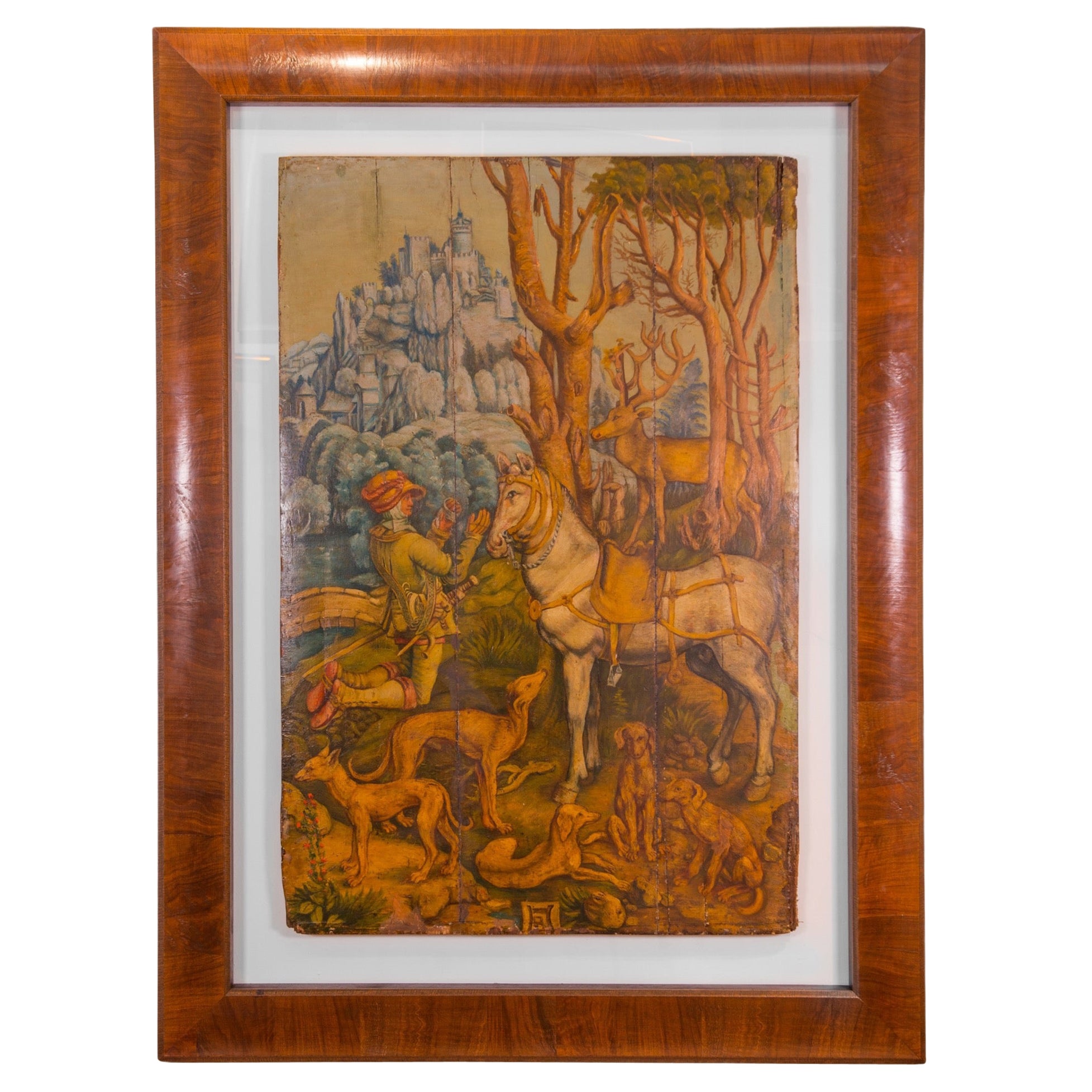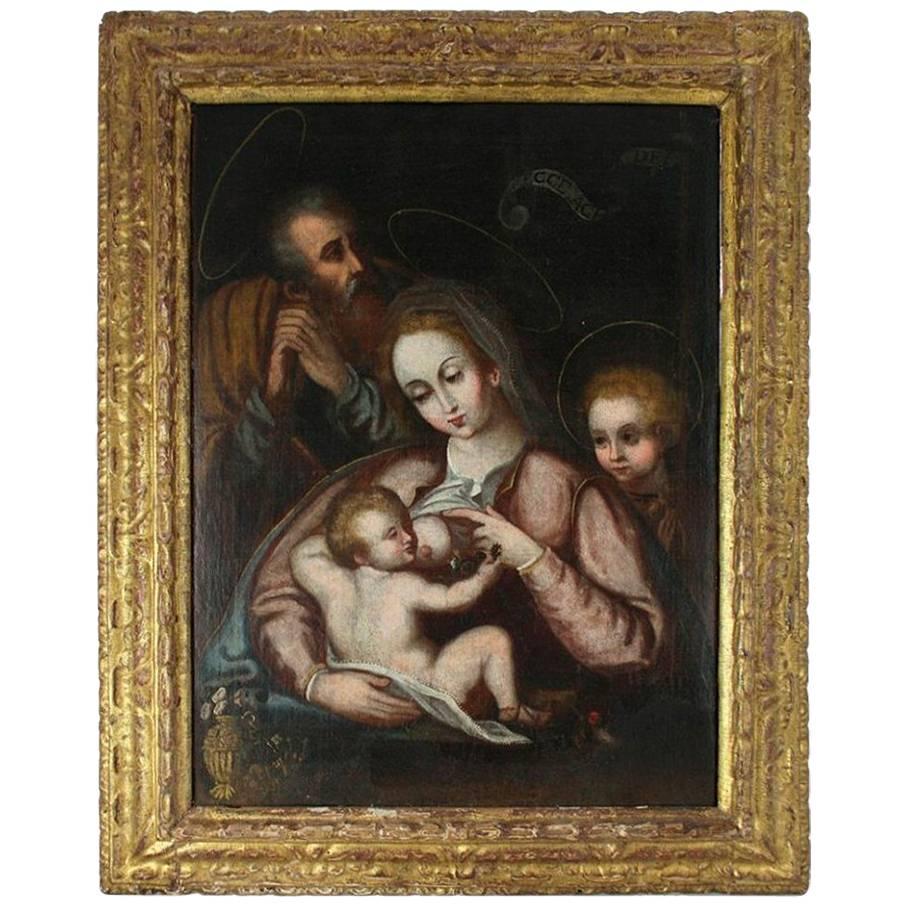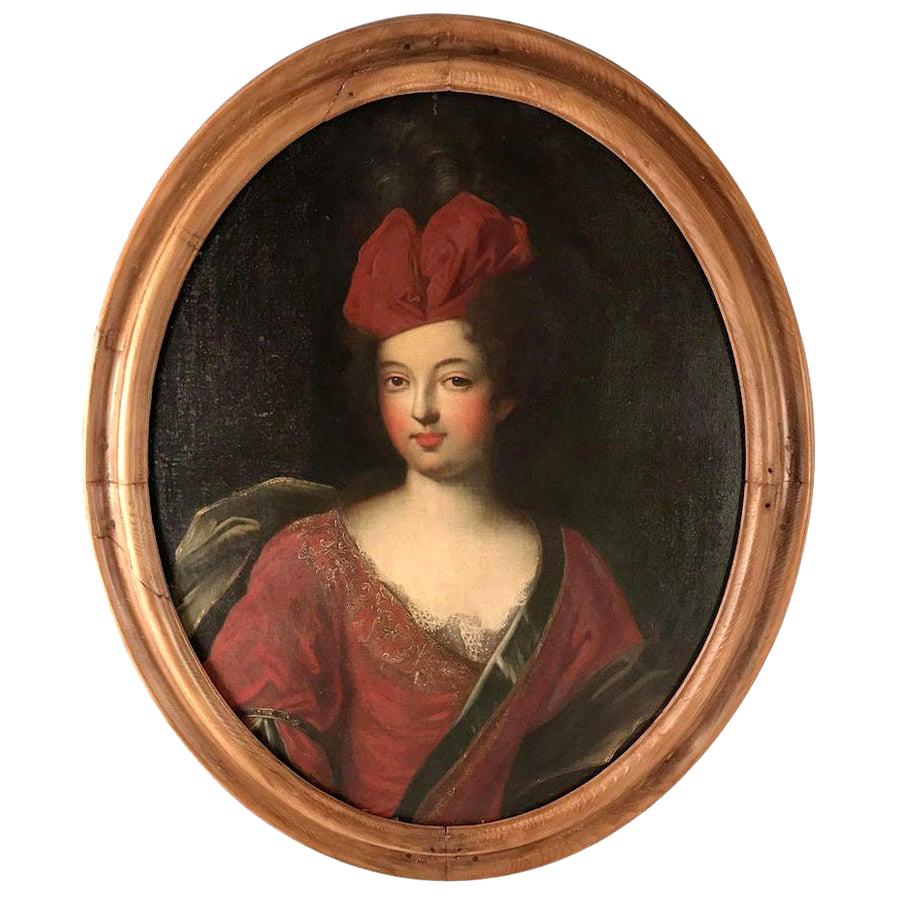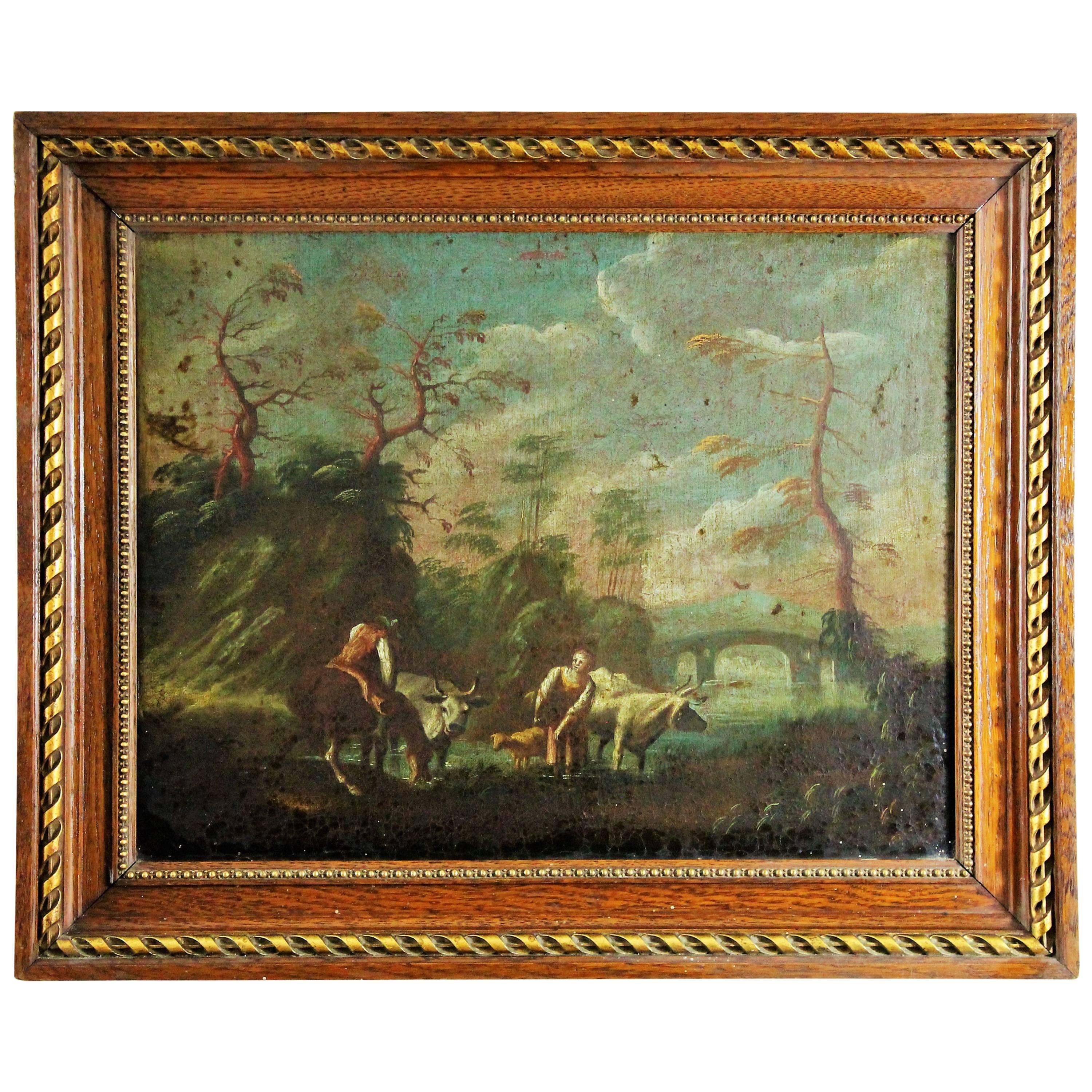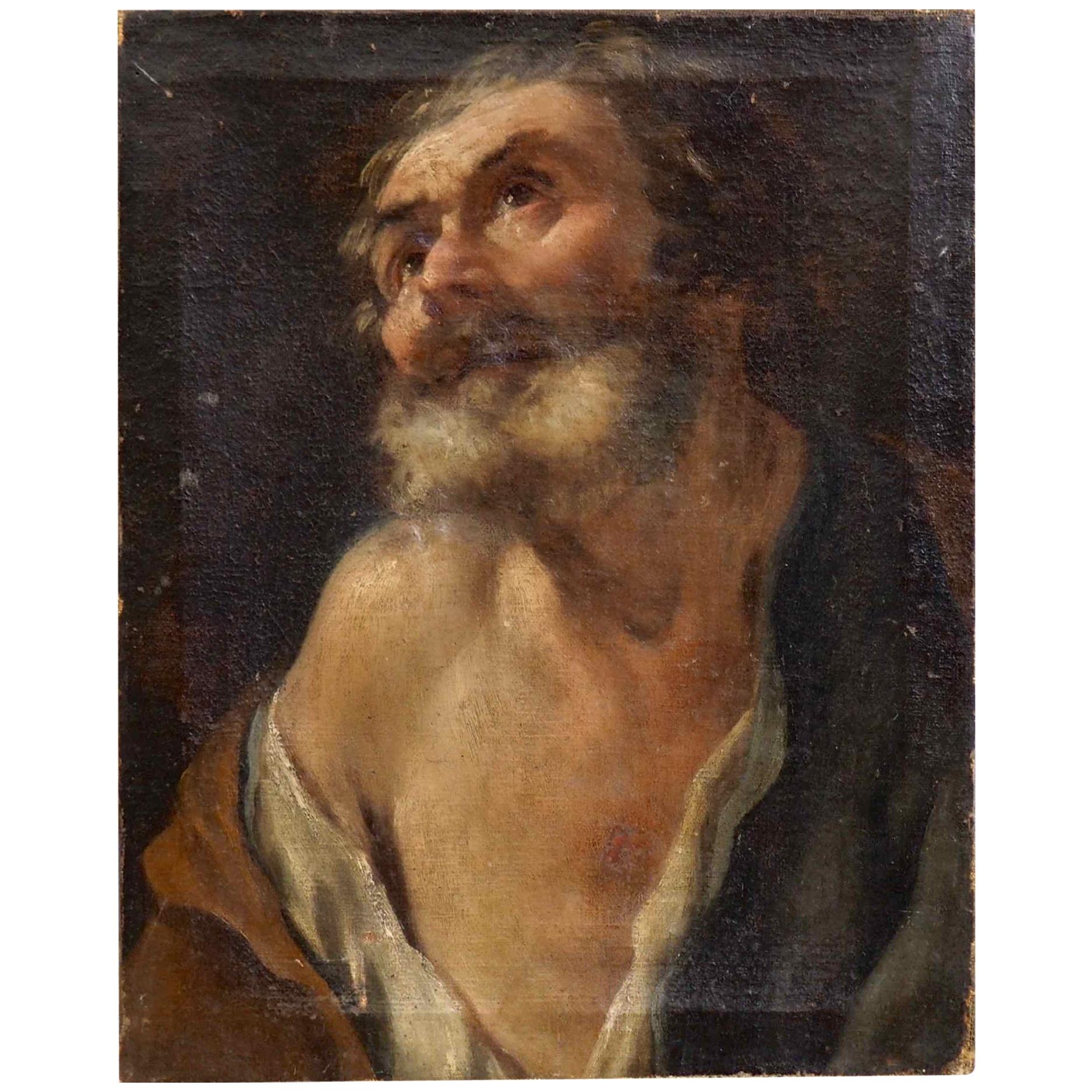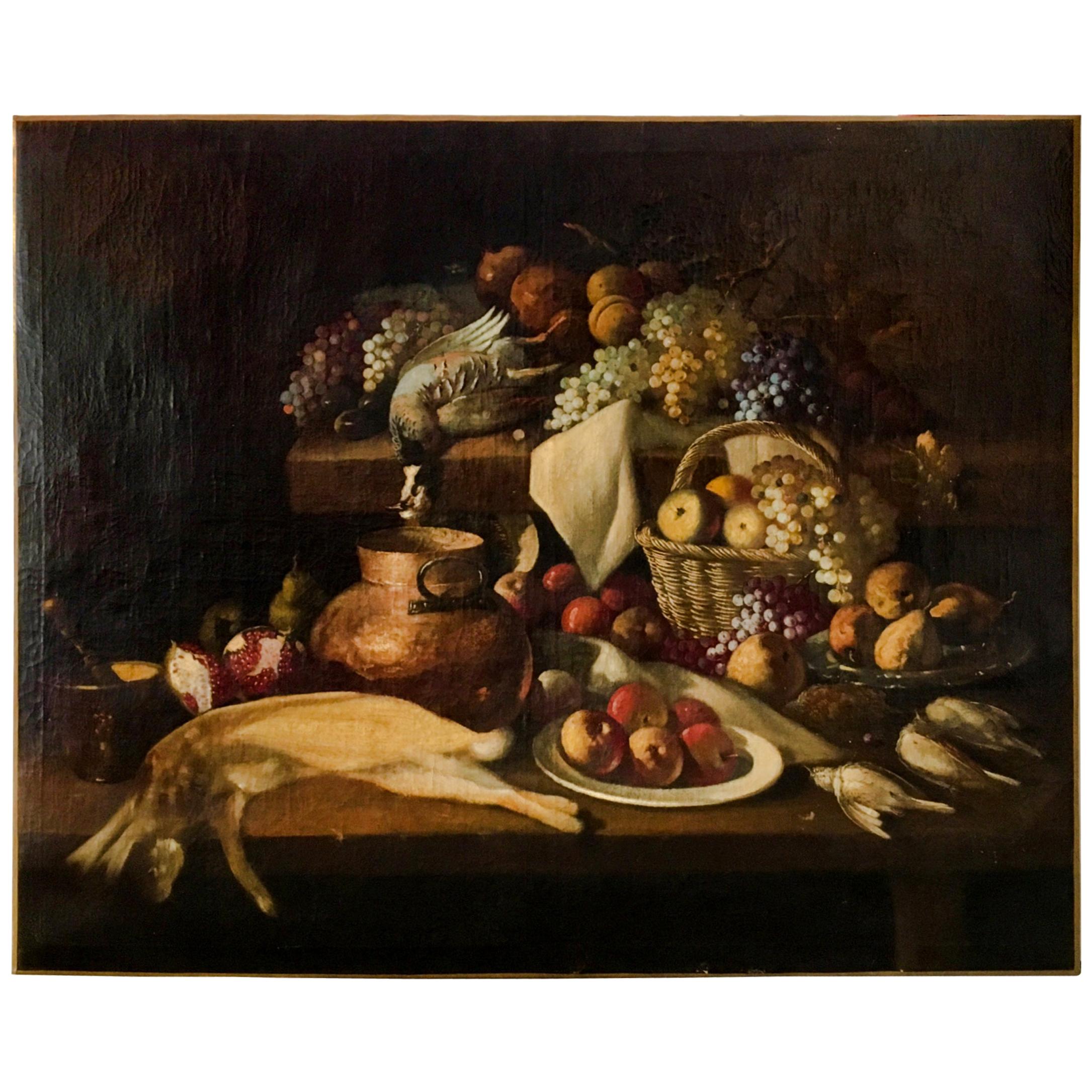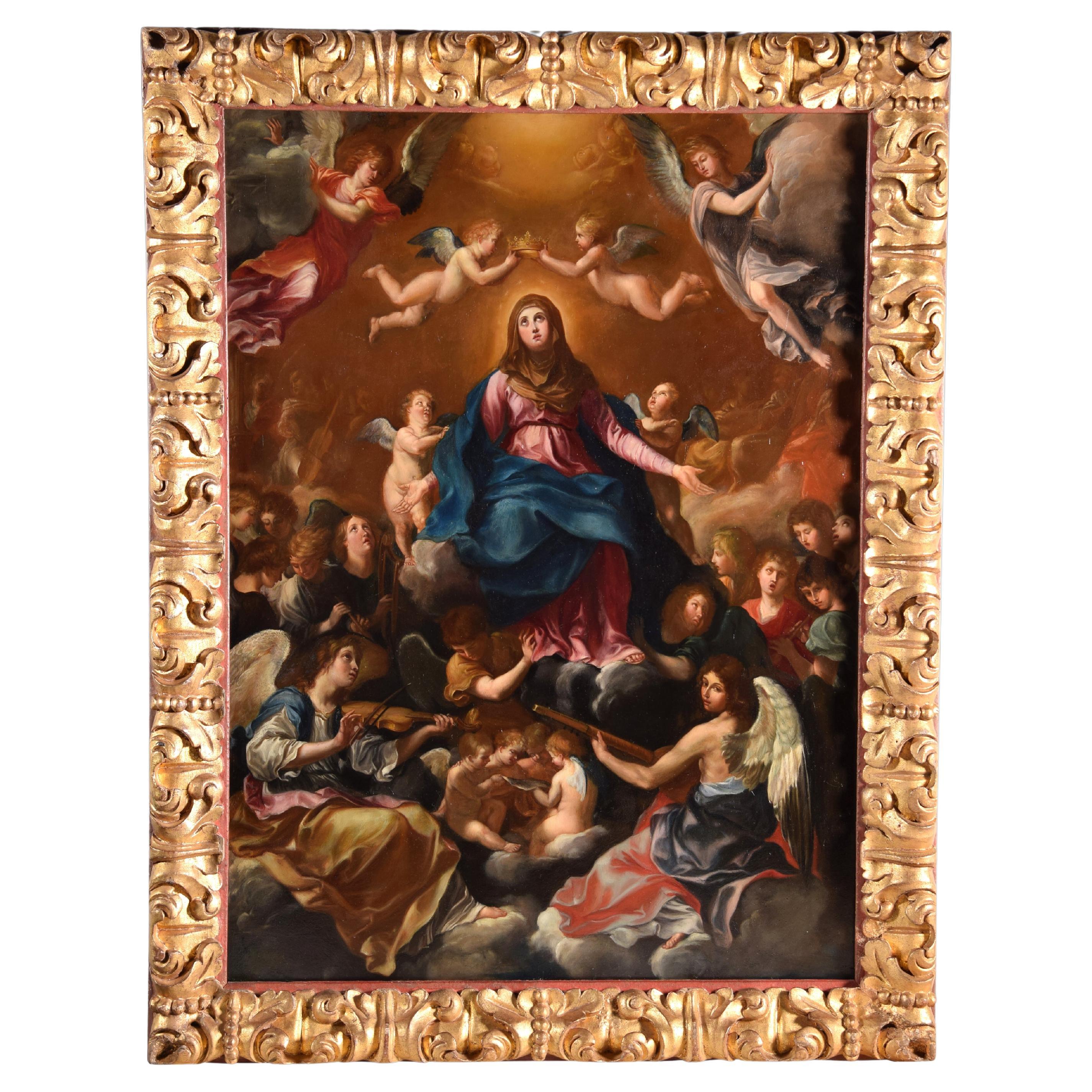
Late 17th Century Baroque Oil on Canvas the Virgin and Jesus
View Similar Items
1 of 13
Late 17th Century Baroque Oil on Canvas the Virgin and Jesus
About the Item
- Dimensions:Height: 18.12 in (46 cm)Width: 13 in (33 cm)Depth: 1.19 in (3 cm)
- Style:Baroque (Of the Period)
- Materials and Techniques:
- Place of Origin:
- Period:Late 17th Century
- Date of Manufacture:1680
- Condition:Wear consistent with age and use. The painting has been restored and framed on a more recent canvas. In the photos you can see the original canvas (more obscure) on the newer (lighter) canvas.
- Seller Location:Toledo, ES
- Reference Number:Seller: Art. 1371stDibs: LU4409214829992
You May Also Like
- 17th Century Christ and the Samaritan Oil on Canvas Roman SchoolLocated in Milan, ITRoman school of the 17th century Landscape with bridge - Christ and the Samaritan woman at the well Oil on canvas, cm 42 x 59,5 - With frame, cm 54, 5 x 71 cm The small canvas portrays a broad view of the city surrounded by a bucolic and lush landscape, probably a reinterpretation of the Roman countryside or the Agro. The fulcrum of the canvas is the bridge consisting of several bays beyond which stands a village. In the distance the landscape made of green mountains opens into what looks like a lake crossed by boats. The landscape is animated by the human presence; not only small and fleeting figurines intent on walking along earthy paths but also the representation, in the foreground, of an Gospel episode, that of Christ and the Samaritan woman at the well. The landscape can be clearly traced back to a painter trained on the examples of the great seventeenth-century Roman baroque landscape that sees in the Lunette Aldobrandini by Annibale Carracci but also in Claude Lorrain, Nicolas Poussin and Gaspar Doghet are its greatest achievers. If in the past, therefore, the landscape was considered the scenic background on which to project the representation of divine or human characters, in the seventeenth century it became an autonomous and codified pictorial genre. With Carracci comes the so-called ideal landscape: a mental reconstruction of a peaceful and harmonious nature in which the dream of a perfect communion with man is realized. In the wake of Hannibal, as mentioned, during the seventeenth century the "classic" Roman landscape knows a long and happy season by artists such as Domenichino, and the French Claude Lorrain, Nicolas Poussin and Gaspar Dughet. Lorrain investigates the Roman countryside in all its aspects, studying the variations in the different hours of the day, the seasons or weather conditions, but always nourished by a sense of bucolic Virgilian. With Poussin the approach becomes intellectual elaboration and sophisticated rational construction. From the examples of the great masters, the Roman Baroque season, from the middle of the century, saw the flourishing of several personalities who, with shots, but also important personal reworkings, led to further spread the genre. Among the personalities that can be compared to the work in question we cannot fail to mention Crescenzio Onofri (1634-1714), defined by Salerno as the only true pupil of Dughet, who then spread in Florence the taste of the Baroque landscape influencing Tuscan painters such as Panfi and Peruzzini. His paintings are in various Roman collections; such as, for example, the landscapes from the Sacchetti Collection and today at the Pinacoteca Capitolina. and those in the Almagià collection in Rome, others in the Palazzo di Montecitorio, but the most conspicuous group is in the Galleria Doria. In comparison we can mention the two passages of the National Gallery in London, the landscape with a bridge over the Antiquarian Market but also the design of the National Gallery of Art in Washington. In the work you can also find the influences of the art of Giovanni Francesco Grimaldi...Category
Antique 17th Century Italian Paintings
MaterialsCanvas
- 17th Century Italian Flemish Oil on Canvas Painting of Adoration of the MagiLocated in North Miami, FL17th Century Italian Flemish oil on canvas painting depicting the Adoration of the Magi. Early Flemish painting was contemporary to the development of the early Renaissance in Italy. In the middle of the 15th century Italy...Category
Antique 17th Century Italian Baroque Paintings
MaterialsWood, Giltwood, Paint
$26,663 Sale Price24% Off - The Vision of Saint Hubertus, Late 17th CenturyLocated in North Miami, FLLate 17th century oil on joined wood panel interpretation of The Vision of Saint Hubertus by Albrecht Durer. It was painted in 1501 and became a very po...Category
Antique 17th Century German Baroque Paintings
MaterialsAcrylic, Lucite, Wood, Paint
$14,000 Sale Price20% Off - 17th Century Spanish School Breastfeeding VirginLocated in Marbella, ESBeautiful oil on canvas with four protagonists, the Virgin breastfeeding baby Jesus with St. Joseph and a young St. John the Baptist. Typical 17th century composition with the secondary characters in the background. Relined canvas and original gold leaf gilded frame...Category
Antique 17th Century Spanish Renaissance Paintings
MaterialsWood, Paint
- Late 17th Century Oil Portrait of a LadyLocated in Lymington, GBAn oil on canvas portrait of a young French courtier, circa 1690. This evocative antique French school picture has been attributed to the portrait painter Jean-François de Troy (1679-1752). De Troy was famous as a portrait painter of fashionable society women. This is a very attractive late 17th century painting surviving in its original frame and stretcher. The canvas appears to be untouched. References: 'Jean François de Troy, The Alarm, or the Gouvernante Fidèle', at the Victoria and Albert Museum, London. 'Jean François de Troy, Paris 1679 - Rome 1752', at the Thyssen-Bornemisza Museum. Laurie G. Winters, Troy, de, Grove Art Online, Oxford Art Online, Oxford University Press, 6 May 2016. Everett Fahy & Jayne Wrightsman...Category
Antique 17th Century French Paintings
MaterialsCanvas
- Oil on Canvas Paint Flemish School, 17th Century BelgiumLocated in Beuzevillette, FROil on canvas depicting a country scene: a man watering his horse near a river where two cows and a sheep wade accompanied by a farmer. Work of northern France or Belgium of the 17t...Category
Antique 17th Century Belgian Paintings
MaterialsCanvas


